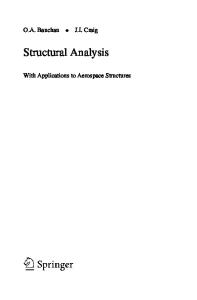Generation and Structural Analysis of Silicon Nanoparticles
- PDF / 2,071,599 Bytes
- 4 Pages / 414.72 x 648 pts Page_size
- 63 Downloads / 381 Views
A silicon nitride cantilever with a silicon nitride (integral) tip was used for the AFM. The microfabricated cantilever was wide-legged with a length of 100 microns and a spring constant of 0.6 N/in. Our AFM is based on detecting the cantilever deflection using an optical lever technique. The light beam from a laser diode is focussed on the cantilever and reflected off its back. The reflected beam is detected by a split photodetector diode. The AFM was operated in constant force mode with a force between the tip and the sample of the order of nano-Newtons. The images were taken with a scan frequency of 8.7 Hz. RESULTS AND DISCUSSION Fig. la shows a 660 nm x 660 nm AFM image of a sample of silicon particles. A silicon wafer was used as substrate for the preparation of this sample. The particles appear similar in size and shape. Their average diameter is 20 nm. They are randomly distributed on the substrate. The particle films are generally found to be quite flat with corrugations typically being on the scale of the particle diameters. The unresolved area in the upper right of Fig. la is due to a cluster of particles too high to be resolved with our height scale setting. Fig. lb gives a closer view of the same sample. We measured the eccentricity distribution (Fig. 2a) of the particles displayed in Fig. 1. The eccentricity e is defined as e=c/a with c=(a 2 -b2)l1/2 ; 2a, 2b being the major and minor axes of the elliptical cross section of a particle, respectively. The distribution is bell shaped symmetric with a maximum at e--0.5. This gives an average b/a ratio of 0.86. We conclude that the particles are close to spherical with a slight elliptical distortion. We relate the elongated shapes to some attractive interaction between the particles. Fig. 2b gives a size distribution of the silicon particles shown in Fig. 1. The distribution is bell shaped with the maximum at 20 nm and a full width at half maximum (FWHM) of 10 nm. Besides silicon wafers we have also used highly-oriented pyrolytic graphite (HOPG) as substrate. 660 nm x 660 rim AFM images of Si particles grown on HOPG are shown in Fig. 3a. The particles are quite uniform in size and shape. Their average diameter is 25 rim. The particles are loosely packed in some areas but densely packed in others. It becomes clear that there is a tendency for chain-like arrangements. The particles in a chain are usually deformed at the contact areas. The boundaries between the particles often are displayed as straight lines in the images. It appears that strong coupling between the particles within the chain leads to their compression. Fig. 3b shows another 660nm x 660 nm AFM image of silicon nanoparticles on HOPG. The particles
(a)
(b)
Fig. 1: (a) 660 nm x 660 nm AFM image of silicon nanoparticles of 20 nm diameter grown on a silicon wafer substrate, (b) 260nm x 260nm section of the image of Fig. la.
124
Fig. 2: Eccentricity and size distribution of the silicon particles shown in Fig. 1. have sizes from -70nm to -100nm. Again, the chain-like arrangement and the defor
Data Loading...




